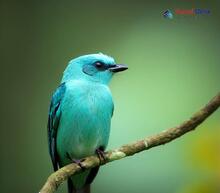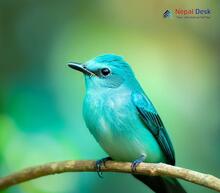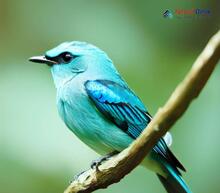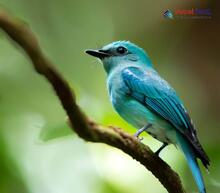The Eumyias genus encompasses a fascinating group of flycatchers that grace the avian world with their vibrant hues and captivating behaviors. A deep dive into the evolution tree, taxonomy, morphology, ecology, and presence in Nepal of these remarkable birds sheds light on their unique adaptations and survival strategies. This article will take you through the intriguing world of Eumyias, unraveling the secrets behind their diverse and mesmerizing features.
A Glimpse into the Evolution Tree and Taxonomy
To truly appreciate the intricacies of the Eumyias genus' evolution, one must delve into its phylogenetic tree. The evolutionary relationships between species within this genus reveal a fascinating story of adaptation and ancestry. Molecular analysis has played a crucial role in constructing this phylogenetic tree, allowing scientists to trace back common ancestors and discern the relationships between individual species.
The Eumyias genus is entwined within a complex taxonomic web with several closely-related genera such as Niltava, Cyanoptila, and Cyornis. While initially classified under the same umbrella due to morphological similarities, further research led to revised taxonomic classifications based on genetic data. This reclassification allows for a more accurate understanding of the relationships between various species in terms of their evolutionary histories.
As technology advances, so too does our understanding of these enchanting flycatchers. Recent studies have provided insights into their ecological niches - with each subspecies displaying distinctive behavioral traits suited to their environment. From their mating rituals to feeding habits, researchers continue to uncover the hidden depths of the Eumyias genus.
The Many Faces of Morphology
The flycatchers of the Eumyias genus exhibit striking morphological features. Their vibrantly colored plumage ranges from dark indigo to bright turquoise blue, making these birds practically impossible to overlook. Some species also showcase contrasting white or buff underparts and distinct patterns on their remiges (flight feathers) and rectrices (tail feathers). A closer look at their morphology reveals adaptions tailored to their specific ecological niche.
Ecological Marvels
The varying habitats in which Eumyias thrive highlight their ecological diversity. From dense evergreen forests to open alpine meadows, these flycatchers have made a niche for themselves across elevational gradients and ecological contexts. They primarily feed on flying insects caught mid-air or gleaned from leaves, displaying impressive agility as they manoeuvre through their surroundings. Some species are altitudinal migrants, moving to lower elevations during the non-breeding season for resource availability.
Eumyias in the Heart of Nepal
Nepal hosts a significant population of Eumyias flycatchers owing to its diverse landscapes and climatic zones. Birdwatchers and enthusiasts can find these incredible species inhabiting various regions within the country, including national parks and conservation areas. Their presence significantly aids in maintaining a balanced ecosystem as they contribute to insect population control. Nepal's ongoing conservation efforts are aimed at preserving these avian wonders for future generations.
In conclusion, the Eumyias genus presents an awe-inspiring world filled with evolutionary stories, fascinating taxonomy, vibrant morphology, diverse ecological adaptations, and a significant presence in Nepal. As we continue to learn about these flycatchers' intricacies, we not only enhance our appreciation for the natural world but also contribute to safeguarding these valuable species that enrich our ecosystems.




